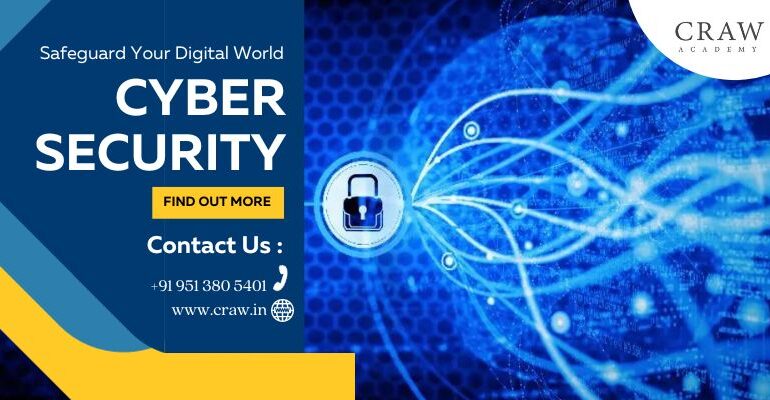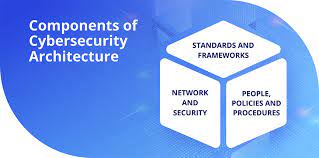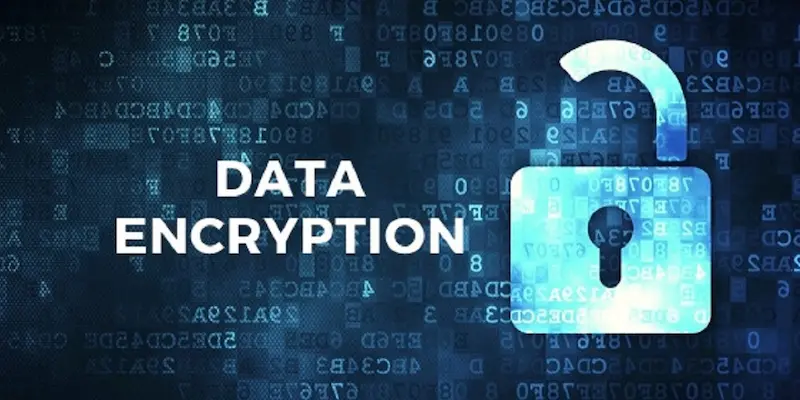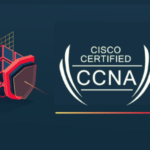Mastering Cyber Security: A Comprehensive Guide to Safeguard Your Digital World

Mastering Cyber Security: A Comprehensive Guide to Safeguard Your Digital World
Mastering Cyber Security
If you are thinking about mastering cyber security, you can read this article, which is specially designed to introduce students to the concepts of cyber security, threats, and solutions. Moreover, they’ll be able to know where they could go to start their career in cyber security. What are we waiting for? Let’s get straight into the topic!
The Evolution of Cyber Threats:
Let’s start by unveiling the changing nature of digital dangers from the beginning to the ongoing transformation. Malicious actors have consistently adapted to technological breakthroughs and modifications in the digital environment, which has characterized the evolution of cyber threats. An outline of the phases in the development of cyber threats is provided below:
| S.No. | Year of Evolution | Cyber Threats |
| 1. | 1980s-1990s | Early Days – Malware and Viruses:
With the rise of personal computers, early viruses, and malware first appeared, usually spread by damaged floppy disks. |
| 2. | Late 1990s-2000s | Internet and Connectivity – Worms and Trojans:
Worms and Trojans were developed as the internet expanded and spread via file-sharing and email by exploiting vulnerabilities in networked systems. |
| 3. | Mid-2000s-2010s | Era of Exploits – Exploit Kits and Phishing:
Software vulnerabilities could now be automatically exploited thanks to the release of exploit kits. Phishing attacks emerged as a means of tricking people into divulging private information. |
| 4. | 2010s-2020s | Ransomware and Advanced Persistent Threats (APTs):
Ransomware emerged, causing hackers to encrypt data and demand payment before decrypting it. APTs, which targeted specific businesses for extended monitoring or interference, were usually funded by states. |
| 5. | Late 2010s-present | Fileless and Living-off-the-Land Attacks:
Cybercriminals now employ improved tactics, such as memory-operating, and hard-to-detect fileless malware. Attacks referred to as “living off the land” take advantage of legal tools to get beyond established security measures. |
| 6. | Present | Supply Chain Attacks and Nation-State Threats:
A larger focus should be given to supply chain attacks, in which hackers pilfer software or hardware before the ultimate user uses it. Nation-state threats are defined as state-sponsored organizations that participate in cyber espionage or disruption. |
| 7. | Emerging Trends | Quantum Threats and AI-Based Attacks:
The potential development of quantum computing poses a threat to the security of current encryption techniques. Cyber defenders are utilizing AI for improved security while attackers are employing it to automate and enhance their tactics. |
| 8. | Ongoing | IoT Exploitation:
Because hackers can use Internet of Things (IoT) devices as entry points into networks or as a platform for large-scale attacks, as more of these devices are developed, more vulnerabilities appear. |
Building a Solid Defense:
Building a solid defense is an essential component of a robust cyber security framework. Some of the techniques are as follows:
- Risk Assessment:
Regular risk assessments will help you identify and assess potential cybersecurity hazards that are unique to your firm. Set threat priorities according to their likelihood and possible impact to help direct resource allocation for a focused defensive plan. - Security Policies and Training:
Create and implement thorough security rules that specify access restrictions, authorized use, and incident response guidelines. Employees should receive continual cybersecurity training in order to foster a culture of security consciousness and lower the possibility of vulnerabilities relating to people. - Network Security Measures:
Employ strong network security protocols, such as intrusion detection and prevention systems, firewalls, and frequent security audits. Keep an eye on network traffic for irregularities and unauthorized activity, and react quickly to any security incidents that may arise. - Data Encryption and Access Controls:
To prevent unauthorized access to sensitive data, encrypt it while it’s in transit and at rest. Put strict access controls in place to make sure that only people with the proper authorization can access vital systems and data. - Incident Response Planning:
Create and maintain an incident response strategy to effectively handle and lessen the effects of cybersecurity events. To assess the plan’s efficacy and improve the organization’s capacity to react to threats in real-time, conduct simulated exercises. - Continuous Monitoring and Adaptation:
Create ongoing monitoring procedures to remain alert to changing cyberthreats. To handle new threats and keep a strong defensive posture, cybersecurity strategies, technology, and policies should be updated and adjusted regularly.

Cyber Hygiene Practices:
Cyber Hygiene Practices are Simple yet effective habits to keep your digital space secure. Some of the hygiene practices that you can comply with are as follows:
- Strong Password Management:
For online accounts, create and change complicated passwords that include a combination of letters, numbers, and symbols. Don’t use information that can be easily guessed, such as names or birthdays, to make your passwords stronger. For an extra degree of protection, enable two-factor authentication wherever it is feasible. - Regular Software Updates:
Update operating systems, antivirus software, and apps with the most recent security patches. Vulnerability fixes are frequently included in software updates, which lowers the possibility that cybercriminals would exploit them. When possible, turn on automatic updates to guarantee that security fixes are installed on time. - Phishing Awareness:
Unsolicited emails, texts, or links should be avoided; this is especially the case with those that demand sensitive information or call for immediate action. Check the legitimacy of communications before opening attachments or clicking links from unidentified sources. Keep yourself updated on typical phishing tactics so you can spot and foil any upcoming efforts. - Data Backup:
Make regular backups of crucial data to safe cloud services or external devices to guard against data loss in the case of a cyber disaster. To lessen the effects of ransomware attacks, make sure backups are stored in a different location and verify their integrity. Schedule regular backups and, if at all possible, automate the procedure. - Device Security:
To guard against dangerous software, install reliable antivirus and anti-malware software on all of your devices. To safeguard data on PCs, cellphones, and other devices, use firewalls and encryption. Conduct security audits and malware scans on devices on a regular basis to find and fix any vulnerabilities.
Encryption Demystified:
Understanding the role of encryption in safeguarding data can help you with creating a safe and secure space over the internet. Your conversation will be safe and confidential against online threats that can cause data breaches. Some of the reasons why encryption should be used in organizations are as follows:
- Data Confidentiality:
Sensitive data is kept secret by encryption, which transforms it into an unintelligible format that can only be read with the right decryption key. Encrypted data keeps important assets of the company safe from unauthorized access and interpretation in the case of a security breach. - Compliance with Regulations:
Encryption is required by many industry standards and data protection legislation to protect sensitive data, ensuring that firms abide by legal and regulatory requirements. Organizations can show their dedication to upholding the integrity of employee and customer data and safeguarding privacy by putting encryption into place. - Secure Communication:
Emails and messaging apps are among the communication channels that encryption safeguards, guarding against illegal access to private data and eavesdropping. This is essential for businesses performing transactions across networks and sharing sensitive information, particularly in the financial, medical, and legal services sectors. - Protection Against Insider Threats:
By preventing unauthorized access to sensitive data, even by employees who have authorized access to the system, encryption reduces the danger of insider threats. It provides an added degree of protection by making it more difficult for nefarious insiders or hacked accounts to exploit or obtain sensitive data. - Preservation of Data Integrity:
Data integrity is preserved by encryption, which makes sure that information hasn’t been altered while being transmitted or stored. Un

Emerging Technologies in Cyber Security:
The future of defense against changing cyber threats is being shaped by cutting-edge innovations in cybersecurity. While machine learning and artificial intelligence (AI) allow for more sophisticated threat identification and response, quantum-safe cryptography guards against any potential weaknesses brought forth by quantum computing.
Blockchain improves data and transaction transparency and integrity. 5G technology presents novel security concerns in addition to speed, which calls for creative approaches to network security. Investigating cutting-edge technology is crucial to staying one step ahead of crafty adversaries and guaranteeing strong defenses as cybersecurity continues to develop.
Incident Response Strategies:
In order to mitigate and recover from cyber incidents, incident response methods are essential. They entail a methodical process for locating, eliminating, recovering from, and learning from security breaches.
Incidents can be minimized in impact with prompt, well-coordinated actions, and good communication keeps stakeholders informed. Incident response plans are more effective when they are tested and improved on a regular basis. This gives firms a proactive defense against changing cyber threats.
In the end, a well-implemented incident response plan increases resilience by minimizing downtime and potential harm to the company.
Securing the Human Element:
In cybersecurity, human element security entails tackling human behavior through extensive training initiatives. Inform people on social engineering techniques, how to spot phishing efforts and the value of using strong passwords.
Encourage a culture where employees are aware of cybersecurity issues so they can take the lead in protecting the company. Reiterate best practices frequently and modify training to reflect changing cyber threats, understanding that aware and watchful individuals are critical to overall cybersecurity resilience.
Cyber Security for Businesses:
Customizing cybersecurity plans is crucial because it enables companies to match their defenses to industry standards, particular risks, and risk profiles. Organizations can optimize budget allocation by prioritizing protection based on possible threats and essential assets in customized ways.
In addition to addressing the dynamic nature of cyber threats, adaptive techniques guarantee that defenses continue to be effective in the face of emerging attack vectors. Businesses may create a strong and resilient defense suited to their unique needs and difficulties by customizing cybersecurity tactics.
Navigating Regulatory Compliance:
To ensure that your digital practices are aligned with the current industry standards, you can run the following steps:
- Understanding Applicable Regulations:
Understand and navigate pertinent industry standards, such as PCI DSS, HIPAA, and GDPR, to make sure you are aware of the requirements for compliance. - Implementing Security Controls:
Comply with industry requirements regarding digital practices by putting in place the security controls and safeguards that are required. - Regular Compliance Audits:
Conduct routine compliance audits to evaluate and confirm that digital processes follow industry guidelines, finding and fixing any possible non-compliance problems. - Data Protection Measures:
To comply with regulatory requirements for protecting sensitive data, include data protection measures—such as encryption, access controls, and secure data storage—into digital practices. - Documentation and Reporting:
To demonstrate conformity with industry standards and to be prepared for regulatory inspections, keep thorough records of your digital procedures and security measures.
Future Trends in Cyber Security:
| S.No. | Trends | How? |
| 1. | Zero Trust Architecture | A rise in the use of Zero Trust security models, which improve access controls and data protection by assuming that no entity, inside or outside the network, is trustworthy by default, |
| 2. | Extended Detection and Response (XDR) | XDR systems, which provide integrated threat detection and response capabilities across different security levels, will continue to gain importance. |
| 3. | AI-Driven Threats | The development of AI-driven protection systems and AI-driven attacks has resulted in a more complex and dynamic cybersecurity environment. |
| 4. | Quantum-Safe Cryptography | The creation and use of quantum-safe cryptographic algorithms is necessary to guard against assaults made possible by quantum computing, given the possible increase in dangers posed by this technology. |
| 5. | Cloud Security Posture Management (CSPM) | A greater emphasis on CSPM tools to guarantee best practices compliance in cloud environments and the safe provisioning of cloud resources. |
| 6. | 5G Security Challenges | Addressing potential vulnerabilities and expanded attack surfaces that come with the broad use of 5G networks in terms of security issues. |
| 7. | Ransomware Resilience | In order to counteract ransomware threats, there should be ongoing efforts to strengthen ransomware resilience through effective backup and recovery plans and greater cooperation between the public and private sectors. |
| 8. | IoT Security | Heightened awareness of the need to secure the growing Internet of Things (IoT) ecosystem, with a particular emphasis on standardized protocols and security measures. |
| 9. | Regulatory Evolution | Cybersecurity laws and compliance requirements should be continuously developed and improved in order to handle new risks and guarantee the security of sensitive data. |
| 10. | Human-Centric Security | Acknowledges that human behavior plays a crucial role in cybersecurity and places more emphasis on user awareness training and technology that take this into account when detecting and preventing threats. |
Anticipating and Preparing For Upcoming Challenges and Solutions
If you want to learn how you can protect yourself and your resources against online threats, you can get in contact with a reputed cybersecurity training and certification institution, which is Craw Security. They offer the best training and certification programs for students who want to learn cybersecurity techniques and skills.
One of their best course is the “1 Year Diploma Course in Cyber Security Training in Delhi,” which is a specifically customized course for IT Aspirants who want to enhance their knowledge and skills in protecting online resources against cyber threats.
Moreover, on the premises of Craw Security, you’ll be able to develop your skills much faster via virtual labs, which can allow you to test out your knowledge and skills on live machines.
Frequently Asked Questions
About Mastering Cyber Security: A Comprehensive Guide to Safeguard Your Digital World
Q1: What is cyber security, and why is it important?
Cybersecurity protects data, networks, and computer systems against loss, harm, or illegal access. In an increasingly digital age, it is vital to protect privacy, preserve sensitive data, and prevent interruptions to critical services.
Q2: How can I enhance my cyber hygiene?
To enhance your cyber hygiene, you can follow the mentioned steps:
- Strong Passwords,
- Enable Two-Factor Authentication (2FA),
- Regular Software Updates,
- Beware of Phishing, and
- Secure Wi-Fi Connections.
Q3: What are the key components of a strong cyber security framework?
The following are the key components of a strong cybersecurity framework:
- Risk Assessment,
- Security Policies and Procedures,
- Access Controls,
- Network Security,
- Endpoint Protection,
- Data Encryption,
- Incident Response Plan,
- Security Awareness Training,
- Regular Security Audits and Monitoring, and
- Vendor Risk Management.
Q4: How does encryption contribute to cyber security?
In the following ways, encryption contributes to cyber security:
- Confidentiality,
- Data Integrity,
- Authentication,
- Secure Communication, and
- Compliance with Regulations.
Q5: What should businesses consider in their cyber security strategy?
While running a business, businessmen should focus on the following cybersecurity strategies:
- Risk Assessment,
- Employee Training,
- Incident Response Plan,
- Access Controls,
- Regular Software Updates,
- Data Encryption,
- Network Security Measures,
- Regular Security Audits,
- Backup and Recovery, and
- Regulatory Compliance.
Q6: How do emerging technologies impact the future of cyber security?
Blockchain, IoT, and AI are emerging technologies revolutionizing cybersecurity by improving data integrity through decentralized ledgers, enabling more advanced threat detection, and requiring new security procedures to address vulnerabilities in interconnected ecosystems.
Cryptography faces both opportunities and challenges from quantum computing, and as 5G becomes widely used, new dimensions of speed and connectivity are introduced, necessitating the need for flexible cybersecurity measures to protect against ever-changing threats.
Q7: What steps should be taken in case of a cyber security incident?
In the following ways you can take care of the situation in case a cyber security incident occurs:
- Isolate and Contain,
- Notify Relevant Parties,
- Activate Incident Response Plan,
- Engage Law Enforcement (if necessary), and
- Communicate Externally (as needed).
Q8: How can individuals secure their digital lives?
You need to apply the following security measures for the protection of your online appearance:
- Strong Passwords,
- Two-Factor Authentication (2FA),
- Regular Software Updates,
- Secure Wi-Fi,
- Phishing Awareness,
- Data Encryption,
- Backup Data,
- Privacy Settings,
- Device Security, and
- Educate Yourself.
Q9: What is the role of regulatory compliance in cyber security?
Regulatory compliance provides a structure that requires firms to follow certain cybersecurity guidelines and put cybersecurity measures in place to secure sensitive information and systems. Compliance with regulatory standards fosters a culture of responsible data management and helps mitigate risks and secure consumer information.
Q10: What are the future trends in cyber security?
The landscape of cybersecurity is expected to be shaped by various trends, given its current direction:
- Zero Trust Architecture,
- Extended Detection and Response (XDR),
- AI-Driven Threats,
- Quantum-Safe Cryptography,
- Cloud Security Posture Management (CSPM),
- 5G Security Challenges,
- Ransomware Resilience,
- IoT Security,
- Regulatory Evolution, and
- Human-Centric Security.















